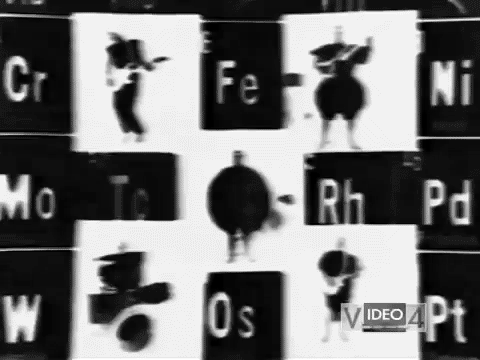Visual Synthesizers and On-the-Spot Effects
In 1980, artist and video-maker Denise Gallant and engineer Rob Schafer founded Synopsis, a small video production company, in Los Angeles. Their main product was the Synopsis Video Synthesizer (SVS), an analog video synthesizer they invented, capable of transforming images while interacting with a music track in real time. The terms “visual synthesizers” and “video synthesizer” or “V-synth” appeared in the late 1960s to describe machines that apply synthetic creation strategies developed for sound processing to visuals. Using their prototype, Gallant and Schafer produced their own work alongside musicians in San Francisco clubs. Before long, they began to get noticed and became a part of the emerging music scenes of the time: New Wave, Punk, and New Age. They produced live works as video DJs, or “VJs” and clips for groups like Tuxedomoon, Cabaret Voltaire, Wall of Voodoo, and Supertramp. They created montages by mixing videos, photographs, recordings, every manner of distortion, and colorful experiments, both live and in studio.
The clip Snow Canon by Steve Roach (1981)  , for example, presented patterns resembling light beams or comets, animating a sequence of over-saturated photographs. In the recording Janitor by Suburban Lawns (1980), the concert was filmed and processed live. Onstage, the singer and musicians, in costume, danced in a performance punctuated by visuals, prepared in advance, of explosions, fires and DNA. The colors run amok, overlap, and move to the beat, to the point of altering the image
, for example, presented patterns resembling light beams or comets, animating a sequence of over-saturated photographs. In the recording Janitor by Suburban Lawns (1980), the concert was filmed and processed live. Onstage, the singer and musicians, in costume, danced in a performance punctuated by visuals, prepared in advance, of explosions, fires and DNA. The colors run amok, overlap, and move to the beat, to the point of altering the image  . In the first part of the Synopsis promotional video, it was precisely just colors that appeared on the screen, creating geometric and abstract motifs, forming and dissolving as the beat accelerates
. In the first part of the Synopsis promotional video, it was precisely just colors that appeared on the screen, creating geometric and abstract motifs, forming and dissolving as the beat accelerates  .
.
Manipulating Waves and Filters
Gallant and Schafer’s SVS synthesizer was presented as an eight-level console, with twelve inputs and six scale multipliers on each level. It incorporated several frequency oscillators to create vertical and horizontal deformations, as well as a pitch follower (“an external signal processing module”), enabling interactions between music and video. But the most innovative component was its colorizer, which included 720 degrees of colors, a gradation tool, and luminosity, shade and saturation controls, now present in most computer graphics software. In fact, just like the SVS, they enable a user to convert several types of treatments and transformations into images.
Gallant and Schafer’s synthesizer was a “filter” in the accepted sense of the Photoshop software because it could be used for generating special effects. 77 “Filter basics,” Adobe Photoshop online help. See: http://b-o.fr/photoshop It was, in reality, an analog machine manipulating the waves that form video images and, while it was possible to have basic control over the modifications, their effects were unpredictable. On the other hand, the notion of accident does not exist in Photoshop: the effects can be adjusted, but they nevertheless remain preprogrammed algorithmic processes.
Photoshop and its Effects
Broadly inspired by photomechanical techniques, Photoshop was initially developed with the aim of bringing together and automatically repro-ducing the effects of certain manipulations that previously, could only be carried out in a darkroom. In Software Takes Command, artist and researcher Lev Manovich discusses the mimetic dimension of this software. 88 Lev Manovich, Software Takes Command (London: Bloomsbury Academic, 2013). According to him, the names of filters are at once simulations of traditional techniques and metaphors meant to give some idea of what the algorithms will produce. Among other things, he mentions the Wind filter, that emulates the perception of the action of the wind on an object. 99 Ibid., 131 (Wind filter). Moreover, when used at its highest degree of intensity and thus maximum automation, this process is akin to certain effects created by Gallant and Schafer in their videos. Additionally, operations such as Posterize in the Adjustments menu, and Solarize and Neon Glow in the Effects menu produce effects similar to certain SVS wave manipulations. It is not surprising, then, that John Knoll, one of the creators of Photoshop, described it in 1987 as an “interface with special effects,” borrowing this expression from cinematography, which he was involved in on a daily basis as a visual effects supervisor. Finally, does Photoshop tend towards the “metamedium”—a medium capable of simulating all the others—imagined in 1977 by Alan Kay, the father of Object-Oriented Programming and of the earliest graphic interfaces? 1010 Adele Goldberg, Alan Kay, “Personal Dynamic Media,” Computer 10, no. 3 (Washington: IEEE Computer Society, 1977), 31–41. Also, how can we retain the unpre- dictability and the dynamism peculiar to experimental machines when we use this quintessentially “multimedia” software?